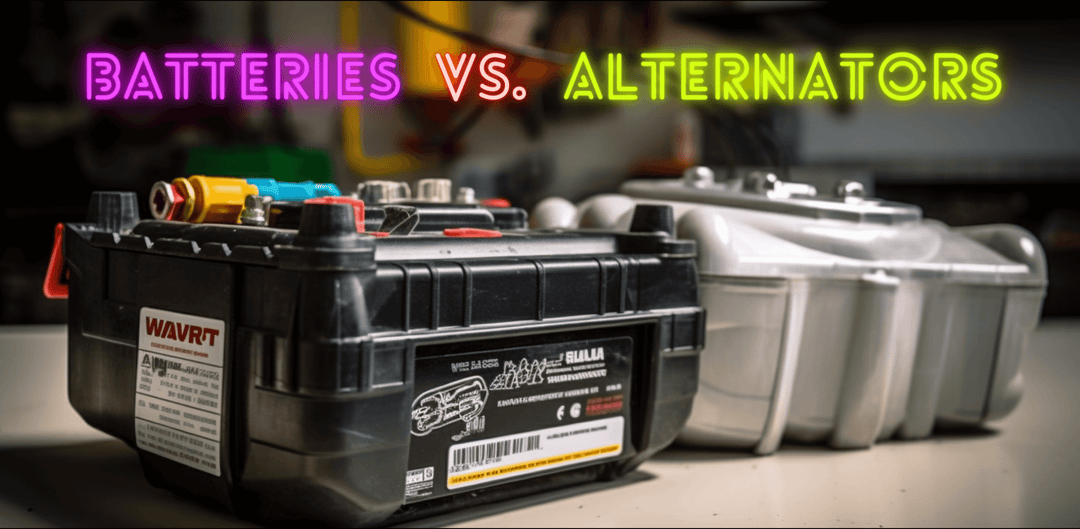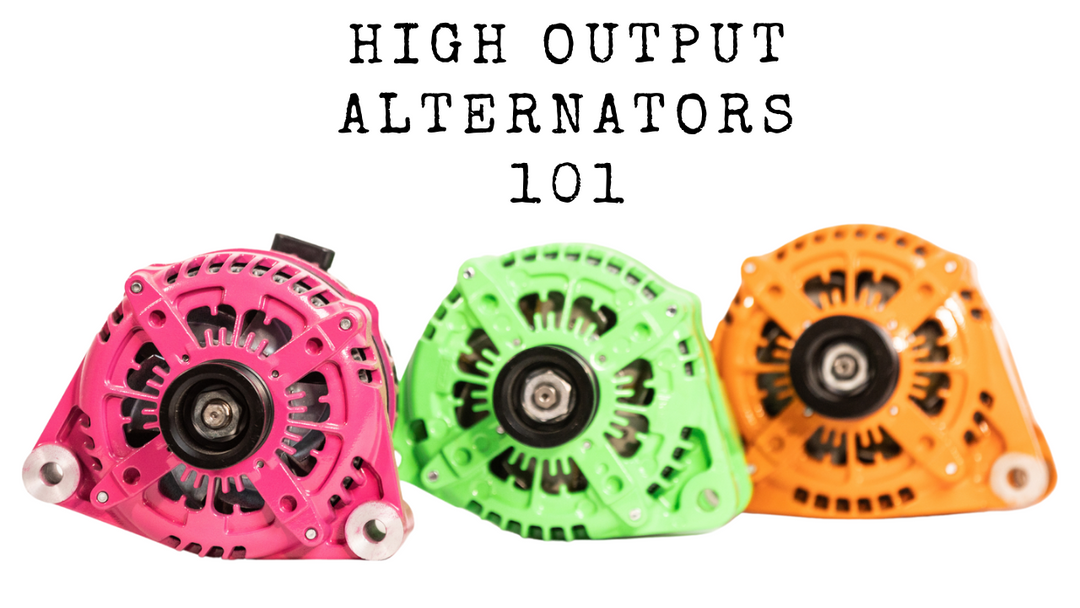A Step-by-Step Guide to Installing Your High Output Alternator for Maximum Efficiency
Installing a high output alternator is an important step for maintaining the performance of any vehicle. This article provides a detailed, step-by-step guide to assist with the installation process. It is important that each step be followed carefully to ensure the proper and safe operation of the newly installed part. The instructions are designed to make it easier for anyone, regardless of mechanical experience, to complete this task successfully.
The first part of this article will discuss how to prepare for the installation. This includes gathering necessary tools and materials and safety precautions that must be considered before beginning work on the car or truck.
Following these preparations, readers can move on to installing the new alternator and completing all final adjustments needed once everything has been set up correctly. With careful consideration given to each stage of the process, anyone should be able to install their high output alternator effectively and efficiently.
Tools Required For Installation
Before beginning the installation of a high output alternator, all necessary tools must be obtained. This includes a socket and ratchet set, wrench set, belt tensioner tool, safety gear such as gloves or eyewear, and a memory saver. Additionally, one should ensure they have acquired a new alternator for replacement purposes.
The battery wire must also be disconnected before installation to avoid any potential injury from electrical shock.
All components used during installation should be inspected thoroughly before use to guarantee proper functioning.
Careful attention should be paid throughout the installation of the high output alternator so that it functions correctly once complete.
Preparing the Vehicle and General Alternator Installation Information
Upgrading to a custom high output alternator is often the best choice for your vehicle. Preparing the car properly and understanding the installation steps are crucial to ensure a smooth installation process and superior results.
Before beginning the installation, disconnect any aftermarket accessories connected to the battery terminals and ensure all other electrical components in the system function correctly. Make sure the battery is fully charged before disconnecting the battery wires. It's also required to install a ½ inch shorter belt and complete a "Big 3" wiring upgrade before installing the new alternator, as this minimizes stress on both the engine and alternator during operation.
Installing an alternator can be relatively simple, but complexity may vary depending on the type of vehicle and alternator being used. Before working on the car, familiarize yourself with all the steps and safety precautions.
If using an externally regulated alternator, connect any additional wiring according to the manufacturer's instructions, as failure to do so may cause damage or overheating issues. Following these guidelines will prepare you for a successful alternator installation.
Disconnecting The Old Alternator
To begin disconnecting the old alternator, it is essential to understand how a high output alternator functions. This understanding can be acquired by consulting an alternator wiring diagram.
Once this knowledge is obtained, locate and identify all necessary connections associated with the existing alternator. These may vary depending on the make and model. However, they are typically easy to spot due to their distinct design, which often includes an alternator connector.
Once identified, use appropriate tools (e.g., wrenches) to remove any fasteners connecting the original equipment in place carefully; make sure not to damage surrounding components during this step.
Before proceeding further, ensure all electrical cables and other related attachments, such as ground wires or relays, are disconnected from the unit.
Installing The New Alternator
Installing a new alternator requires careful preparation and execution to ensure proper function.
The replacement alternator must be correctly sized for the vehicle; an incorrect size can lead to poor output at idle RPMs.
Once the correct size has been established, the belt must be installed. The half-inch shorter belt should have its routing checked and aligned with all pulley grooves.
Additionally, some vehicles may require slip bushings in the OEM bracket to fit the new alternator into place.
After mounting the new unit, tightening bolts according to OEM specifications is necessary before replacing any belts or tensioners if applicable.
It is essential to ensure that belt tension and tensioner position are set correctly; too loose or tight could cause slipping during the engine's operation.
If your vehicle has a spring-type belt tensioner, make sure that this part is adjusted within its recommended range of travel by consulting the manufacturer’s guidelines.
Inadequate grip from worn drive belts should also be considered when choosing an appropriate replacement, as fresh ones will provide better traction than those that have seen use over time.
Connecting The Wiring
The alternator's wiring is crucial to ensuring it functions correctly. To do this, one must understand how to wire an alternator and have access to a wiring diagram of the specific model they are installing.
It is essential to ensure all connections in the wiring process are correct, as mistakes could lead to further issues or potential danger due to incorrect grounding.
When connecting the wires for the alternator, there should be three primary wires - one positive and two negative. The positive wire connects directly from the alternator post to the positive on the battery.
The ground wire connects the alternator mounting bolt to the frame or chassis. The second ground wire will connect the negative on the battery to the chassis or frame. This wire can vary in size depending on what type of vehicle you are working with, but typically, a 2/0 gauge cable is sufficient when using high output applications.
For best results, both cables should be installed according to their respective specifications outlined in your particular wiring diagram of the alternator installation guide and checked regularly for any signs of corrosion or wear, which could compromise their reliability over time.
When you are grounding the wiring to the ground or the chassis, please remember that this needs to be on bare metal to get it adequately grounded.
After your Big 3 Wiring is installed correctly, the next step will be to plug the factory plug directly into the alternator. If you received an alternator that is not Plug-and-Play, please refer to the written instructions on installing the new plug.
Additionally, fuses should be incorporated into these lines near their sources (either at the battery or alternator ends) for added safety during operation. Following these steps will help ensure proper connection and performance of your high output alternator system.
Checking The Alternator
Before starting the vehicle, it is essential to check for proper wiring connections and ensure that all connections are secure. They confirm that the voltage regulator is connected correctly and that functioning is also necessary.
Once these steps have been completed, the high output alternator can be tested by running a load test on the battery. This should include turning on headlights and the blower motor (or cooling fan) while keeping any audio system or other electrical loads OFF during testing.
The engine RPM should be brought up to 2000 RPM, and the voltage should be checked with a handheld voltmeter at the battery terminals. If the alternator is operating correctly, there will be an increase in voltage of at least one full volt, indicating that the alternator is charging.
Pulley changing instructions should only be carried out if necessary, as this may result in an incorrect pulley ratio for the application and can cause damage to components if not done correctly.
Testing The Electrical System
Testing the electrical system is critical to ensure your high output alternator functions appropriately.
First, test the alternator's voltage output at idle and while revving by using a multimeter set on DC Volts mode. The voltage can range anywhere between 13.6V - 15.5V, depending on the voltage setpoint of the regulator installed on the alternator, the battery size, and numerous other factors. If you are unsure of the voltage you need to be charging at, feel free to contact the JS Alternator Customer Service team.
Secondly, check for amperage draw with an amp meter or clamp-type device connected to each power cable from the back of the alternator. This will help determine whether any shorts are in either cable that could potentially cause damage to both the vehicle and alternator.
If all readings appear normal, then you can rest assured that your new installation has succeeded and will provide reliable power for many years.
Re-Installing The Components
Once the correct belt has been obtained, it is time to re-install all components in their original positions.
Begin by securing the alternator to the engine using its mounting bolts. Then, fit the pulley onto the alternator shaft and secure it tightly with a nut or bolt.
Next, connect the stator wires to their terminals on either side of the alternator.
Finally, route the drive belt around both pulleys and adjust the tensioner to avoid slippage while running at full power.
It is important to check for proper installation before starting up your vehicle, as any errors could result in costly damage down the line.
Final Tips And Checks
It is essential always to ensure that the output rating of the high output alternator being installed matches any relevant input on other components in the vehicle or marine vessel.
Output ratings are often overlooked when installing a new alternator and can cause problems if they do not match up correctly.
It is also essential to check voltage levels at all connections throughout the electrical system and any battery banks to ensure there are no issues during operation.
When using a high output alternator in a vehicle or marine application, paying attention to the environment where it will be located is essential.
Saltwater environments need additional consideration for corrosion protection, which may require other coatings on parts and more frequent inspections for damage.
The correct amount of lubrication should also be used on moving parts to reduce wear and tear from running engines' vibration.
Properly maintaining these components can significantly extend your high output alternator's life span.
Conclusion
Installing a high output alternator is an important task that should be cautiously undertaken. Following these steps will ensure a new alternator's safe and successful installation.
Gathering all necessary information, tools, and components before beginning the job is important. Once prepared, it is essential to take care when disconnecting the old alternator so as not to cause any further damage to its components or electrical system.
The next step involves installing the new alternator by instructions provided by the manufacturer. Afterward, checking the connections between terminals and ensuring they are correctly tightened can help guard against future problems.
Finally, testing the electrical system can guarantee its full functionality after installation. Any issues encountered throughout this process must be addressed immediately to avoid damaging other parts of the vehicle’s electrical system.
With careful attention paid during each installation phase, owners can rest assured that their newly installed high output alternator will function safely for years to come.




